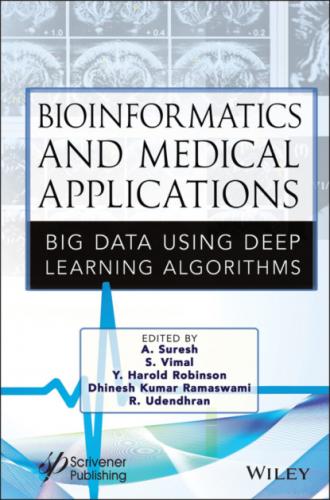However, we realized the potential of further increasing the accuracy by analyzing those records which were wrongly classified by all/most of the algorithms. The reason for it could be high bias, high variance, low precision, or low recall. So, we identified those columns/attributes which were causing the data to be misclassified by assigning probabilities to each tuple in the column and combining those probabilities by using conditional probability. Hence, we focused only on those columns which would result in accurate prediction by increasing the weight of those columns and feature reduction. Hence, by using the probabilistic approach, we could effectively remove the anomalies and increase the prediction accuracy.
References
1. Heart Disease Facts Statistics, Centers for Disease Control and Prevention, [Online], Available: https://www.cdc.gov/heartdisease/facts.htm. [Accessed: 27-Apr-2019].
2. Thenmozhi, K. and Deepika, P., Heart disease prediction using classification with different decision tree techniques. Int. J. Eng. Res. Gen. Sci., 2, 6, 6–11, 2014.
3. Kaggle Dataset, Cardiovascular Disease dataset, Available: https://www.kaggle.com/sulianova/cardiovascular-disease-dataset.
4. Kannan, R. and Vasanthi, V., Machine learning algorithms with ROC curve for predicting and diagnosing the heart disease, in: Soft Computing and Medical Bioinformatics, pp. 63–72, Springer Singapore, Jun 2018.
5. Latha, C.B.C. and Jeeva, S.C., Improving the accuracy of prediction of heart disease risk based on ensemble classification techniques. Inform. Med. Unlocked, 16, 100203, 2019.
6. Mohan, S., Thirumalai, C., Srivastava, G., Effective heart disease prediction using hybrid machine learning techniques. IEEE Access, 7, 81542–81554, 2019.
7. Thaiparnit, S., Kritsanasung, S., Chumuang, N., A classification for patients with heart disease based on hoeffding tree, in: 2019 16th International Joint Conference on Computer Science and Software Engineering (JCSSE), Jul 2019, IEEE.
8. Atallah, R. and Al-Mousa, A., Heart Disease Detection Using Machine Learning Majority Voting Ensemble Method. 2019 2nd International Conference on new Trends in Computing Sciences (ICTCS), 9-11 Oct. 2019.
9. Alim, M.A. and Habib, S., Robust Heart Disease Prediction: A Novel Approach based on Significant Feature and Ensemble learning Model. 2020 3rd International Conference on Computing, Mathematics and Engineering Technologies (iCoMET).
10. Pouriyeh, S., A Comprehensive Investigation and Comparison of Machine Learning Techniques in the Domain of Heart Disease. 22nd IEEE Symposium on Computers and Communication (ISCC 2017): Workshops - ICTS4eHealth, 2017.
11. Aridas, C., Kotsiantis, S., Vrahatis, M., Increasing Diversity in Random Forests Using Naive Bayes. IFIP International Conference on Artificial Intelligence Applications and Innovations, September 2016.
12. Gayathri Devi, R. and Sumanjani, P., Improved classification techniques by combining KNN and Random Forest with Naive Bayesian Classifier. IEEE International Conference on Engineering and Technology (ICETECH), 20th March 2015.
13. Maiga, J., Hungilo, G.G., Pranowo, Comparison of Machine Learning Models in Prediction of Cardiovascular Disease Using Health Record Data. 2019 International Conference on Informatics, Multimedia, Cyber and Information System (ICIM-CIS).
14. EI-Bialy, R., Salamay, M.A., Karam, O.H., Khalifa, M.E., Feature analysis of coronary artery heart disease data sets. Proc. Comput. Sci., 65, 459–68, 2015.
15. Jagwant, S. and Rajinder, K., Cardiovascular disease classification ensemble optimization using genetic algorithm and neural network. Indian J. Sci. Technol., 9, S1, 2016.
*Corresponding author: [email protected]
2
Cancerous Cells Detection in Lung Organs of Human Body: IoT-Based Healthcare 4.0 Approach
Rohit Rastogi1*, D.K. Chaturvedi2, Sheelu Sagar3, Neeti Tandon4 and Mukund Rastogi5
1 Department of CSE, ABES Engineering College Ghaziabad, U.P., India
2 Dept. of Electrical Engineering, Dayalbagh Educational Institute, Agra, India
3 Amity International Business School, Amity Univ., Noida, U.P., India
4 Vikram University, Ujjain, M.P., India
5 BTech CSE Third Year, Department of CSE, ABES Engineering College Ghaziabad, U.P., India
Abstract
Old age cancer was the cause of death. Forty percent of cancers are found in people over the age of 65. Lung cancer is one of these potentially deadly cancers. Young-, middle-, and old-aged patients, men who are chronic smokers or women who have never smoked are all victims of the disease. Therefore, a classification of lung cancer based on the associated risks (high risk, low risk, high risk) is required.
The study was conducted using a lung cancer classification scheme by studying micrographs and classifying them into a deep neural network using machine learning (ML) framework. Tissue microscopy images are based on the risk of using deep concealed neural networks. Neural Networks–Deep Conversion Deep Neural Networks are only used for classification (photo search) based on primary image (for example, displayed name) and similarity.
After that, scene recognition is performed on the stage. These algorithms help to recognize faces, tumors, people, road signs, plastics, and different perspective of visual information. The productivity of circular networks in image detection is one of the primary causes why the world has stirred to proficiency. Their in-depth learning is a major advance in computer vision (CV) that has important applications in car driving, robotics, drones, security, medical diagnostics, and treatment of blindness.
Keywords: Deep neural network, lung cancer, CellProfiler, CADe Server, big data analytics in healthcare
2.1 Introduction
NSCLC includes three types of cancer: squamous cell carcinoma, adenocarcinoma, and large cell carcinoma derived from lung tissue. Adenocarcinoma is a slow-growing cancer that first appears in the outer region of the lung. Lung cancer is more common in smokers, but the most well-known sort of lung cancer in nonsmokers. Squamous cell carcinoma is more normal in the focal point of the lung and all the more generally in smokers, but large cell carcinoma can be found anywhere in the lung tissue and grows faster than adenomas and lung cancer [9, 20].
According to Choi, H. and his team members, lung cancer risk classification models with gene expression function are very interesting. Change previous models based on individual symptomatic genes.
They
